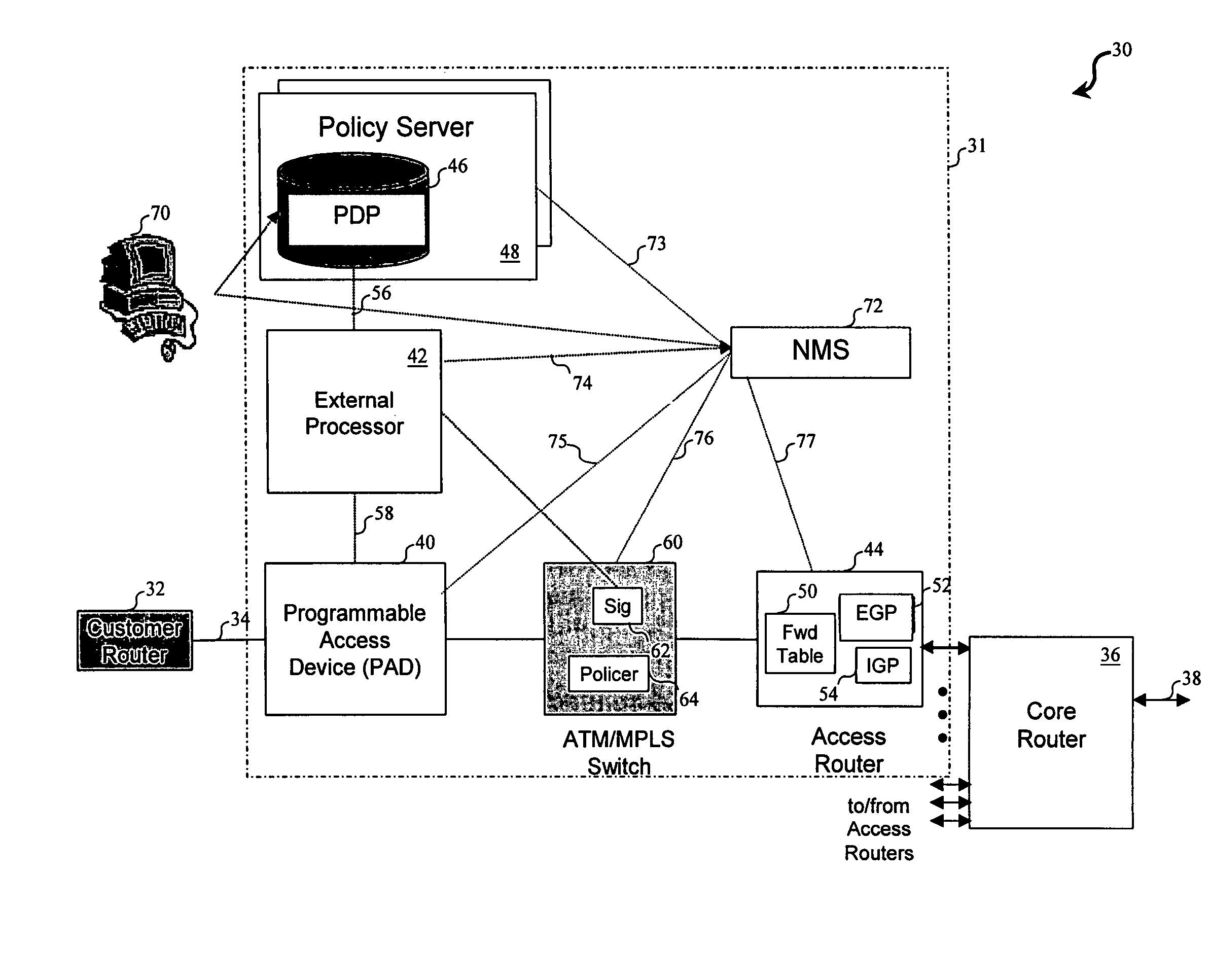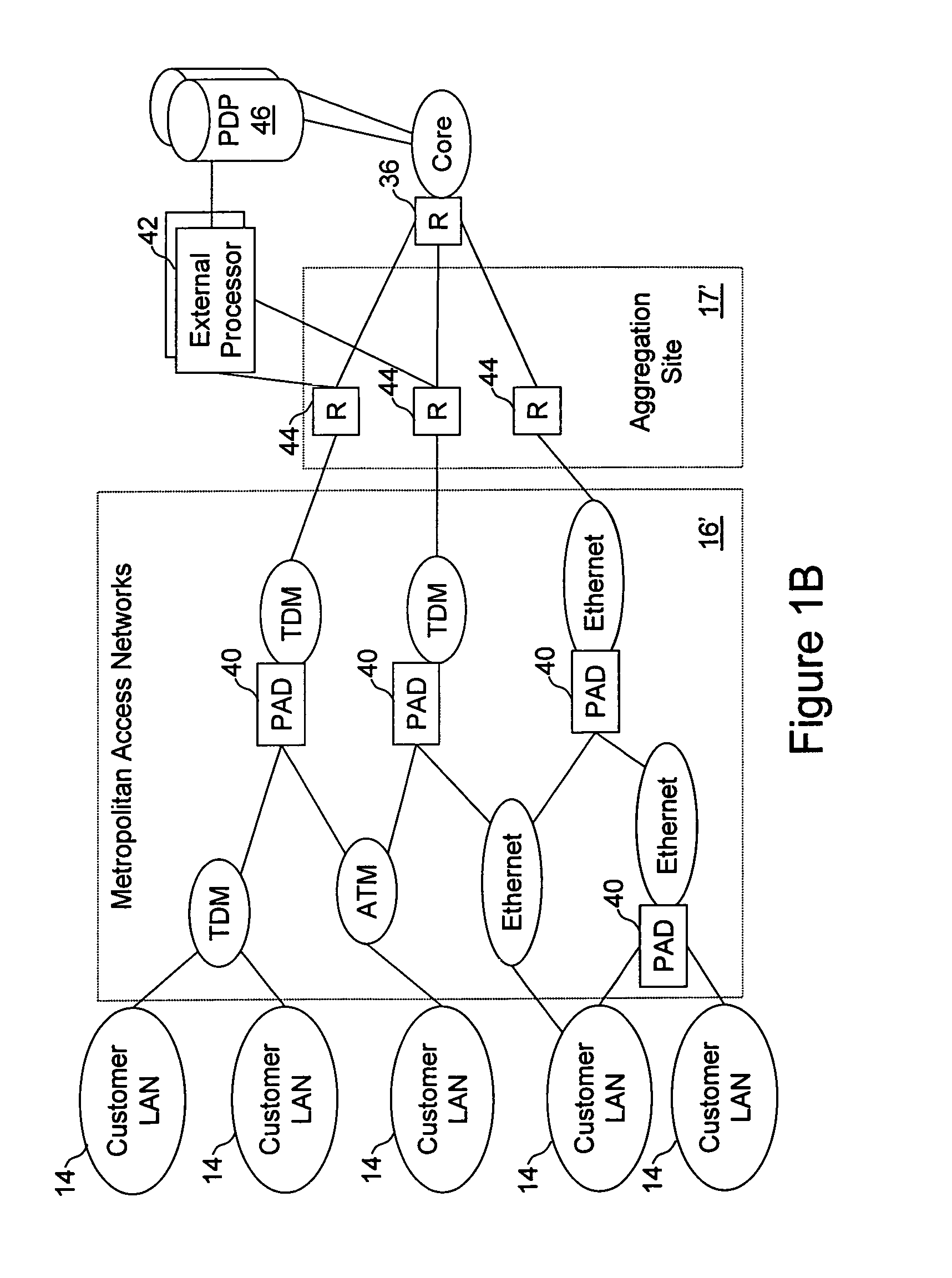Message, control and reporting interface for a distributed network access system
a distributed network access system and message control technology, applied in the field of communication networks, can solve the problems of inability to expand or extend the packet processing throughput of the router, the limited range of data services that a service provider can offer in addition to basic packet routing, and the inability to add new services or modify existing services, etc., to achieve the effect of improving scalability, flexibility, extensibility, and security
- Summary
- Abstract
- Description
- Claims
- Application Information
AI Technical Summary
Benefits of technology
Problems solved by technology
Method used
Image
Examples
Embodiment Construction
Distributed Network Access System Architecture
[0053]With reference again to the figures and in particular with reference to FIG. 2, there is depicted a high-level block diagram of a portion of a communication network 30 having a distributed network access system 31 in accordance with the present invention. As illustrated, communication network 30 may be coupled to equipment of a number of customers (one of which is represented by a customer router 32) by an access line 34. As in FIG. 1, access line 34 may employ any of a number of commonly utilized transport network technologies, such as Ethernet, SONET, ATM and frame relay, and may further include unillustrated aggregation hardware.
[0054]As with conventional networks, communication network 30 includes one or more core communication links 38 (e.g., trunk lines) coupled to one or more core routers 36. However, in contrast to conventional communication networks, such as that illustrated in FIG. 1, customer router 32 does not interface...
PUM
 Login to View More
Login to View More Abstract
Description
Claims
Application Information
 Login to View More
Login to View More - R&D
- Intellectual Property
- Life Sciences
- Materials
- Tech Scout
- Unparalleled Data Quality
- Higher Quality Content
- 60% Fewer Hallucinations
Browse by: Latest US Patents, China's latest patents, Technical Efficacy Thesaurus, Application Domain, Technology Topic, Popular Technical Reports.
© 2025 PatSnap. All rights reserved.Legal|Privacy policy|Modern Slavery Act Transparency Statement|Sitemap|About US| Contact US: help@patsnap.com



